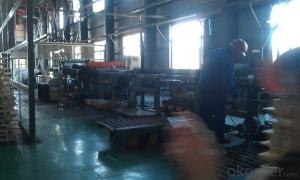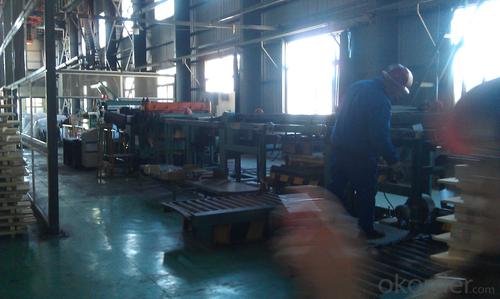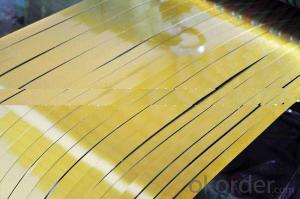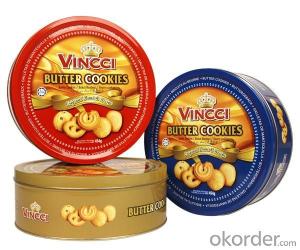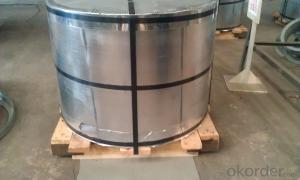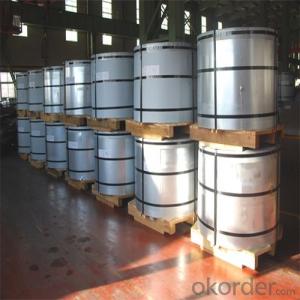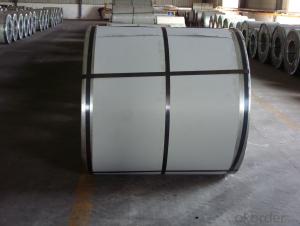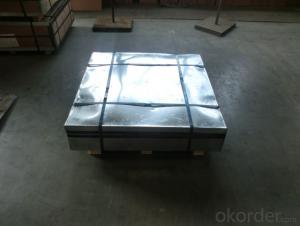Quality Tin Free Steel TFS Coils
- Loading Port:
- China Main Port
- Payment Terms:
- TT OR LC
- Min Order Qty:
- -
- Supply Capability:
- -
OKorder Service Pledge
OKorder Financial Service
You Might Also Like
Tin Free Steel (TFS)
Is also known as chromed steel, as it is obtained by coating the metal base (low-carbon steel) with an ultra-thin layer of metallic chrome and then with a chromium oxide layer.This steel product was developed to meet economic requirements, and excels tinplate in paintability, paint adhesion, and economy. It is widely used for making beverage cans and 18-liter cans. It is also used for making photographic film cases and as a protective material for optical fiber cables.
Our TFS Specification:
Standard: AISI, ASTM, BS, DIN, GB, JIS
Material: MR,SPCC
Thickness:0.15mm - 0.45mm
Width: 600mm -1150mm
Temper: T1-T5
Annealing: BA & CA
Coil Inner Diameter: 508mm
Weight: 6-10 tons/coil 1~1.7 tons/sheets bundle
Oil: DOS
Surface: Finish,bright,stone,matte,silver
Packing:
1、For sheets: plastic or waterproof paper, metallic cover and angles, steel strips,wooden pallet.
2、For Coils: plastic or waterproof paper,plastic protect plate,steel strips.
Both Prime and Second Quality Are Available!!!
- Q: How does tinplate contribute to sustainability efforts?
- Tinplate contributes to sustainability efforts in several ways. Firstly, it is a highly recyclable material, which means that it can be reused multiple times without losing its properties. This helps reduce the demand for new raw materials and minimizes waste generation. Additionally, tinplate is often used as packaging material for food and beverages, providing a protective and durable barrier that extends the shelf life of products, reducing food waste. Furthermore, tinplate cans are lightweight, making them more energy-efficient during transportation, thus reducing carbon emissions. Overall, tinplate's recyclability, protective properties, and energy efficiency make it a sustainable choice for various industries.
- Q: Can tinplate be used for packaging of sensitive electronic components?
- Yes, tinplate can be used for packaging of sensitive electronic components. Tinplate is known for its excellent barrier properties, providing protection against moisture, oxygen, and other external factors that could potentially damage electronic components. Additionally, tinplate is lightweight, easily formable, and cost-effective, making it an ideal choice for packaging sensitive electronic components.
- Q: Can tinplate be used for aerospace applications?
- Yes, tinplate can be used for certain aerospace applications. It is often used for cosmetic purposes in aerospace components such as decorative trim or coating on interior surfaces. However, it is not typically used for structural or critical parts due to its relatively low strength and potential for corrosion.
- Q: How is tinplate used in the wine and spirits industry?
- Tinplate is commonly used in the wine and spirits industry for packaging purposes. It is used to manufacture metal cans, bottles, and closures that help preserve the quality and integrity of the products. Tinplate containers provide a barrier against oxygen, light, and moisture, which helps to prevent oxidation and maintain the taste and aroma of the wine or spirit. Additionally, tinplate packaging is durable, lightweight, and recyclable, making it a popular choice for the industry.
- Q: How does tinplate contribute to the reduction of carbon emissions?
- Tinplate contributes to the reduction of carbon emissions by being a sustainable packaging material that can be recycled and reused multiple times. Unlike other materials, tinplate is highly durable and has a long lifespan, reducing the need for frequent manufacturing and disposal. Additionally, tinplate can be produced using renewable energy sources, further minimizing its carbon footprint.
- Q: Can tinplate packaging be used for medical products?
- Yes, tinplate packaging can be used for medical products. Tinplate is a durable and corrosion-resistant material that provides protection to the contents. It is commonly used for packaging various medical products such as ointments, creams, and small medical devices. Additionally, tinplate packaging offers excellent barrier properties against moisture, light, and oxygen, ensuring the integrity and longevity of the medical products.
- Q: How to prevent the corrosion of tinplate wall hydrogen sulfide blackening, expansion
- Coating anticorrosionThe regular in metal storage tank inner wall spraying anti-corrosion coating, such as epoxy resin or lacquer layers.Spraying antirust paint on the pipeline and oil pump which are exposed to the atmosphere in a certain period.Setting up oil pipelines on the surface of the ground, to remove stagnant water and prevent soaking, so as not to peel off the coating.The movable metal parts in the oil tank equipment, such as the valves of the pipeline, should be coated with antirust grease or grease to prevent moisture from entering through the valve screw and causing corrosion. Outdoor doors should be equipped with protective covers to prevent rainwater from washing off the rust proof layer.The terminal is often set in the pipeline and equipment should be sprayed on the wet, corrosion or rust proof grease grease for protection of good standing.
- Q: Can tinplate be used for energy storage applications?
- Yes, tinplate can be used for energy storage applications. Tinplate, which is a thin steel sheet coated with a layer of tin, offers good corrosion resistance and durability, making it suitable for various energy storage purposes. It can be used in the construction of batteries, capacitors, and other energy storage devices. Additionally, tinplate's ability to maintain airtightness and prevent moisture penetration makes it a reliable choice for storing and preserving energy.
- Q: What is the thickness range of tinplate?
- The thickness range of tinplate typically varies between 0.14mm and 0.6mm.
- Q: What are the safety regulations for using tinplate in food packaging?
- The safety regulations for using tinplate in food packaging vary depending on the region and country. However, generally, tinplate used in food packaging must meet strict standards set by regulatory bodies such as the Food and Drug Administration (FDA) in the United States or the European Food Safety Authority (EFSA) in Europe. These regulations typically cover factors such as the composition of the tinplate, its resistance to corrosion and leaching, and its suitability for contact with different types of food products. Manufacturers are required to comply with these regulations to ensure the safety of consumers and the integrity of the packaged food.
Send your message to us
Quality Tin Free Steel TFS Coils
- Loading Port:
- China Main Port
- Payment Terms:
- TT OR LC
- Min Order Qty:
- -
- Supply Capability:
- -
OKorder Service Pledge
OKorder Financial Service
Similar products
Hot products
Hot Searches
Related keywords
